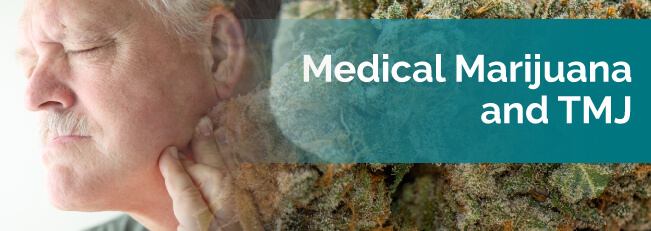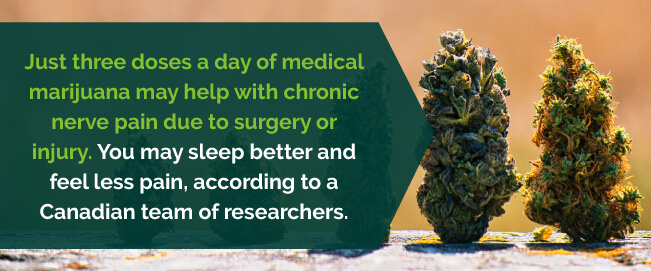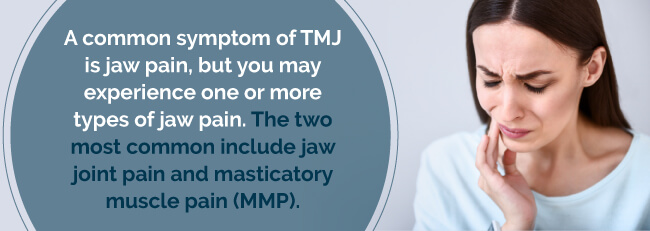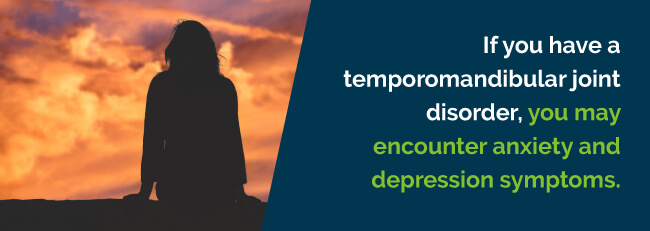
One of the main reasons people use medical cannabis is because it relieves their chronic pain. Therefore, it makes sense that people with TMJ disorders might want to try it. There are many anecdotal success stories where people share their medical marijuana for TMJ success stories. In this guide, we explain more about TMJ and how marijuana may be a useful solution for managing your symptoms.
Temporomandibular joint disorder can cause an uncomfortable condition called muscle spasticity. TMJ disorder makes it challenging to move the mandible up and down. The muscles tense up and are difficult to stretch back out. Often, attempts to do so are painful. In one study involving muscle spasticity in individuals with multiple sclerosis, nearly half of those interviewed said they feel relief from their muscle spasms when they use marijuana.
Find A Doctor Find A Dispensary
Another study in 1997 of 112 MS patients who used marijuana showed nearly all of them had reduced pain and reduced muscle spasticity. The cause of muscle spasticity in temporomandibular joint disorder is likely tension on the muscles. This differs from multiple sclerosis as the spasticity in MS originates in the brain. Nonetheless, there is anecdotal evidence medical marijuana can relieve muscle spasticity in TMJ as well.
Just three doses a day of medical marijuana may help with chronic nerve pain due to surgery or injury. You may sleep better and feel less pain, according to a Canadian team of researchers. Around 15 percent of patients use medical weed as part of their overall all pain management plan.

Medical cannabis for TMJ can relieve most, and sometimes all, symptoms of bruxism without posing any harmful side effects. Stress is the primary cause of bruxism, therefore making cannabis an excellent alternative treatment with its anti-depressant, anti-anxiety, anti-stress and muscle relaxing properties. It also helps with sleep problems.
Medical cannabis seems to help with the ability to control your jaw muscles, so you’re not grinding or clenching your teeth.
Pain is the number one symptom of a temporomandibular joint disorder. TMJ pain interferes with sleep, eating, talking and concentrating. One type of pain associated with TMJ is headache — and headaches are one of the oldest known conditions to be treated with medical marijuana.
Medical cannabis can treat blindingly painful cluster headaches. The headache pain associated with a temporomandibular joint disorder can be quite agonizing, but it’s less severe than cluster headaches. Clusters appear to be neurological, while stress on the joint and general muscle tension in the area causes temporomandibular joint disorder symptoms. Nonetheless, medical marijuana works as an analgesic much like Tylenol. Cannabis can also be used to soothe tension headaches.
Both pre-clinical and clinical research shows medical marijuana can help with neuralgia, somatic pain and visceral pain. Pain from temporomandibular joint disorder is somatic pain. It stems from an area outside of the brain and the intestines. Medical marijuana can provide mild to moderate relief of this sort of pain with the right dose.
TMJ pain is also chronic if the underlying cause cannot be found and corrected. Treating chronic pain with traditional pain relievers, such as opiates and even over-the-counter pain relievers can have severe side effects. Medical marijuana has few if any long-term effects. Furthermore, no dosage of medical marijuana is known to be lethal.
While many marijuana strains can help with TMJ symptoms, some of the best strains for TMJ include:
You can use marijuana to treat TMJ disorder in various ways, but some methods may be more effective than others for helping relieve your unique symptoms. Each mode will produce its effect, sometimes shortening or lengthening the results.
Experimenting with different strains and different methods will help you come up with the best way to take medical marijuana for your symptoms. Methods may include:
Since medical cannabis is still not legal in some states, you need to make sure you’re following the law. You first want to check the laws of your state. You can review information about legal and non-legal states on our website, MarijuanaDoctors.com. Keep in mind, medical marijuana laws are changing rapidly, and more states are approving cannabis for qualifying conditions.
Once you’ve researched your area’s laws, locate a medical marijuana dispensary or find a doctor using our handy and user-friendly search tools. This enables you to get a recommendation from a physician and begin searching for your cannabis treatment.
TMJ stands for temporomandibular joint, which is the ”hinge” connecting your jaw to the side of your head. Your temporomandibular joint enables you to chew, talk and yawn when it is working as it should. However, if you have a TMJ dysfunction, you experience problems with the muscles and joints around your jaw potentially leading to:
Your jaw pain may go away on its own without treatment or with very little. Several do-it-yourself treatment options include applying ice packs or eating soft foods. Pain medications and devices you put inside your mouth are other options. In extreme cases, surgery may be your only option.
An essential step before initiating treatment is obtaining a diagnosis. During a dental exam, your dentist checks the muscles and joints for clicking, tenderness, difficulty moving and popping.
A common symptom of TMJ is jaw pain, but you may experience one or more types of jaw pain. The two most common include jaw joint pain and masticatory muscle pain (MMP).

Jaw joint pain occurs when you have a disrupted jaw joint. The cushioning disk in your jaw joint could be swollen or displaced. You’ll likely feel sharp and intense jaw pain, but it could also spread to your ear region. Often, pain can occur when you move your jaw in a specific manner or if your jaw gets to a particular point while in motion.
Your jaw could lock and accompany your joint pain. Or, your jaw could click, pop or jump out of position suddenly. You may sometimes experience more constant pain or hear a type of grinding noise in your joint. Often it’s a jaw injury causing this latter kind of pain.
MMP, or masticatory muscle pain, occurs when you have sore jaw muscles. It often feels like an aching, dull pain affecting your entire jaw region. It may happen even if you’re not using or moving your jaw, but it can become more severe after you have been using your mouth muscles forcefully such as when you eat tough foods. Daytime clenching of your teeth or bruxism may cause MMP.
With MMP:
It’s difficult to pinpoint what causes MMP, but it appears to occur from a complex interaction of environmental and physical factors, with an emotional and hormonal component. Injury can trigger it, and sensitizing mechanisms may influence it.
Long before TMJ received a label as a medical condition, individuals were suffering from headaches, earaches, and unexplained jaw pain. Since physicians could rule out common culprits like cavities, sinus infections or tumors through tests, most dentists and doctors just assumed the pain patients were experiencing were psychogenic — meaning that the pain was all in their mind.
Nearly 30 years ago, several dentists began to notice a connection between jaw problems and common conditions. For instance, individuals who had their jaws dislocated seemed to suffer the symptoms of TMJ disorder more. As doctors and researchers learned more about the human body and technology made diagnosis much easier, some healthcare experts began to realize jaw problems were not all in the patient’s mind after all.
By around 1980, the medical industry began making a connection between the TM joint and these symptoms. But, they needed more research before they could get an official diagnosis for the condition.
Temporomandibular joint disorders (TMD) cause severe discomfort and pain. It can last for years or just be temporary.
You may also experience headaches, toothaches, dizziness, hearing problems, earaches, neck aches, tinnitus (ringing in the ears) or shoulder pain.
If you have a temporomandibular joint disorder, you may encounter anxiety and depression symptoms, according to a study published in The Journal of Pain. TMD affects your joints and muscles connecting your skull to your lower jaw.

German researchers in the study included over 4,000 patients who all had oral and medical health examinations. Study patients completed a questionnaire on psychiatric risk factors and TMJ pain assessments. The researchers found symptoms of depression seemed more strongly connected to TMJ pain than they did to muscle pain. And anxiety symptoms and muscle pain are related.
According to the researchers, TMJ pain could be a physical symptom of depression or anxiety. They went on to explain both conditions could increase jaw muscle activity potentially leading to pain and inflammation.
According to The TMJ Association:

Often, TMJ disorder symptoms ease up without treatment. Your physician may suggest several treatment options, often combined if your symptoms persist. Treatment options are as follows:
Medications can help relieve TMD-associated pain. These medications may include:
If OTC pain relievers don’t ease your TMJ pain enough, your dentist or physician may prescribe you something stronger, such as ibuprofen or narcotics in severe pain cases. However, non-steroidal anti-inflammatory drugs (NSAIDs), like Motrin IB and Advil, are common pain relievers used to treat TMJ pain.
The use of narcotics has many potential side effects and may lead to addiction.
These medications like amitriptyline, for example, are commonly used to treat depression. However, they can also provide pain relief.
Muscle relaxants can also help relieve pain. Your doctor may recommend you take them for a few days, possibly along with another type of pain reliever.
TMJ disorder therapies include:
1. Mouth guards or oral splints: You may be able to reduce or eliminate your jaw pain by wearing an occlusal appliance, which is a firm or soft device fitted over your teeth.
2. Physical therapy: This treatment could include moist heat and ice, ultrasound and exercises to strengthen and stretch jaw muscles.
3. Counseling: Counseling and education may help you learn the behaviors and factors responsible for intensifying your pain — therefore, allowing you to avoid them. Some examples include leaning on your chin, grinding or clenching your teeth or biting your fingernails.
Your physician may suggest a surgical procedure when other conservative methods aren’t working to relieve your pain. Surgeries may include:
As a minimally invasive procedure, arthrocentesis involves your surgeon inserting small needles into your joints to irrigate the fluid through your bone to eliminate inflammatory byproducts and debris. After the procedure, you may have moderate to severe pain and swelling.
Corticosteroid injections could help you. Your doctor will inject these into your joint. Injecting botulinum toxin type A (BOTOX®) infrequently into your jaw muscles could relieve your TMJ disorder-related pain.
Sometimes, arthroscopic surgery is an effective procedure for treating numerous types of TMJ disorders. Your surgeon inserts a thin, small tube into your joint space. They then insert an arthroscope. The surgeon uses other small surgical instruments as well during your surgery. There are fewer complications and risks with TMJ arthroscopy than other surgeries.
Modified condylotomy indirectly addresses your TMJ using surgery on your mandible rather than your joint. It’s a useful procedure if you’re experiencing pain and locking.
If the pain in your jaw doesn’t resolve with other more-conservative treatments and the pain seems to be due to a structural issue in your joint, the surgeon may perform open-joint surgery to replace or repair your joint. But, this procedure has more risks to it than others, which you should discuss with your surgeon beforehand.
If your physician suggests surgery, sit down with them and discuss the risks and potential benefits and weigh them both carefully.